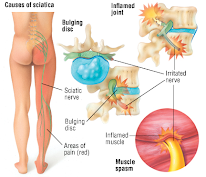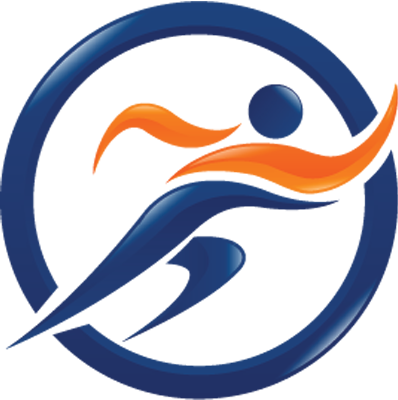 |
| Bell's Palsy And Physiotherapy Treatment |
Bell's palsy is a condition that causes paralysis or weakness of one side of the facial muscles. It may cause due to inflammation or injury to the facial nerve (7th cranial nerve) which controls facial muscles.
It is also called facial palsy where the loss of facial expression mainly due to facial muscle loss it's a motor function such as unable to close your eye, unable to smile, unable to show teeth, unable to raise your eyebrow are most common symptoms.
However, It can happen at any age, most commonly occurring mainly between 20 to 60. The Bell's palsy was named on scientist Sir Charles Bell (1774-1842), who has long been considered to be the first to describe idiopathic facial paralysis in the early 19th century.
Bell's palsy is mostly recovered with the help of Medical treatment and Physiotherapy exercises within 3 to 4 weeks, however, it may depend upon the severity and symptoms of your condition.
What causes Bell’s palsy?
There are too many reasons for Bell's Palsy where Facial nerves become inflamed or injured in which facial muscles become paralyzed.
The exact cause of nerve palsy is sometimes unknown, However, the few most common causes are as per below :
The viruses and bacteria infections that have been associated with the development of Bell’s palsy are:
- Exposure of the ear to extreme cold or severe rain
- Herpes simplex
- HIV, which damages the immune system
- Upper respiratory tract infection
- sarcoidosis, which causes organ inflammation
- herpes zoster virus, which causes chickenpox and shingles
- Infection of the ear
- Epstein-Barr virus, which causes mononucleosis
- Lyme disease, which is a bacterial infection caused by infected ticks
- An autoimmune condition is also a causes palsy
- Unknown cause called Idiopathic cause
If the facial nerve becomes inflamed by infection leads to swelling, which causes pressure on the nerve in the body canal called the Fallopian canal in which the facial nerve passes.
The inflammation of the nerve may reduce blood flow and oxygen to nerve cells. This may lead to Paralysis of one side of facial muscles.
 |
| Facial Nerve |
What are the symptoms of Bell’s palsy?
Symptoms are variable depending upon the severity, causes. There may be partial muscle weakness to complete paralysis of one side of the face. It depends upon nerve damage or compression, if severe nerve damage or compression occurs, there may be complete paralysis, and it takes a longer time to recover.
The symptoms are usually seen suddenly, and you may find them when you wake up in the morning or when you try facial movements such as eating or drinking.
There may be drooping of the corner of the mouth, with difficulty in closing your eyes and raising your eyebrows. It may affect both sides of your face in rare cases.
The most other common symptoms of Bell’s palsy are:
- Facial weakness or Paralysis
- drooping of the corner of the mouth
- Difficulty in the facial expressions, such as smiling, showing teeth, or frowning
- Creases and skin fold of the face becomes smoothened
- Rarely speech affected mainly difficulty pronouncing certain words
- You will see heaviness or numbness of the affected side of the face
- Facial muscle spasm
- Pain, swelling near to ear area.
- Dry eye and mouth
- altered taste
- drooling
- sensitivity to sound
- difficulty eating and drinking
- muscle twitches in the opposite side of the face
- irritation of the eye on the involved side
- headache
The symptoms can be similar to other serious conditions, such as a stroke or other brain diseases. If you find these symptoms contact your doctor as early as possible for permanent resolution.
What are the risk factors for Bell’s palsy?
Your risk of the vulnerability of Bell’s palsy if you:
- If you are pregnant
- If you have uncontrolled diabetes
- If you have a lung infection
- If you have a family history of the stroke, Facial palsy related condition
- If you have High B.P (Hypertension)
- If you have an ear infection related to any condition
- If you have any surgery related to your ear
How is Bell’s palsy diagnosed?
Your Doctor is first to examine you to check How facial muscles are working, They also check your medical history, associated with other diseases such as Diabetes, They also ask you have done any surgery or are open to any cold weather.
Following most common tests are used to verify Bell's Palsy, These are:
- To check Infection, Blood tests are useful.
- To check diabetes or other associated conditions, a Blood test is also useful.
- MRI or CT Scan is also useful to check the possibility of stroke or Brain tumor.
- EMG Test (electromyography) or NCV Test (Nerve conduction test) in which very thin wire electrodes are inserted into the nerve to check the functionality of the facial nerve.
- To check Lyme disease, a lumbar puncture is also required rarely.
How is Bell’s palsy treated?
Mostly symptomatic Medical treatment and Physiotherapy treatment and exercise help you to recover within a few weeks depending upon the severity of symptoms.
Medical treatment:
To Relieve Pain and Inflammation mostly NSAIDs (Non-Steroidal Anti-Inflammatory Drugs) are Prescribed by the Your Doctors such as Aceclofenac or Diclofenac.
If any Infection is seen in lab tests, accordingly Antiviral or antibacterial are prescribed.
To lubricate your Eye, your doctor gives you eye drops or eye patches.
Home treatment:
A hot pack or a warm, moist towel over your face to relieve pain
Facial massage
To strengthen your weak muscles, physical therapy and exercises for your facial muscles
Physiotherapy Treatment:
Following are the most common principles are used to relieve facial palsy.
- To Relieve Pain and Inflammation - Infra-red Therapy or Short wave Diathermy
- Electrical stimulation to strengthen the weak muscle
- To maintain muscle property - Galvanic current
- Facial massage
- Taping or splinting to avoid facial deviation
- Active assisted or Passive exercise of Facial muscles depends upon grading of muscles
- Visual feedback exercise
- Facial care
Are there any complications in Bell’s palsy?
Bell's palsy will completely recover within a few weeks without any complications. Although, few complications may be seen in severe cases of Bell’s palsy.
- Dryness in the eye on the affected side may lead to infections, ulcers, or difficulty in vision.
- Synkinesis- in which synergic movement of facial muscles when you try to smile, your eye also closed.
- Weak facial muscles mean the face has slightly deviated.
 |
| Sciatica |

No comments:
Post a Comment